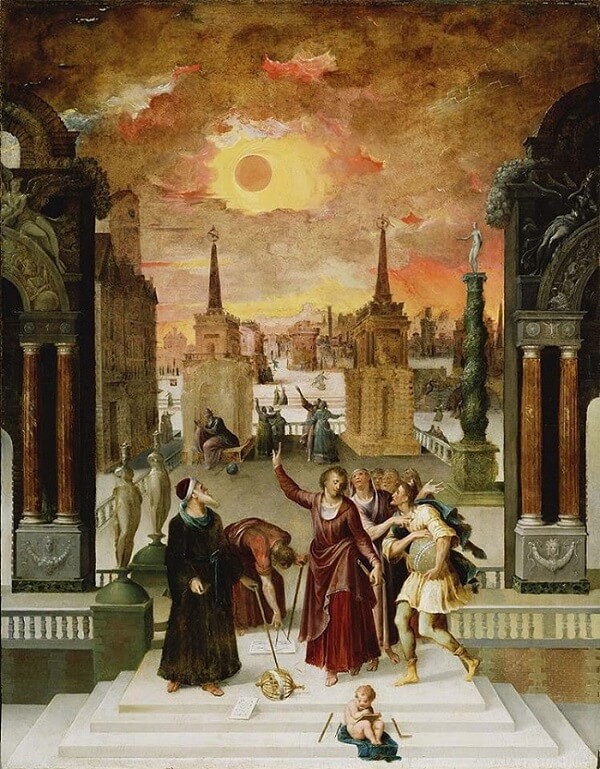Activity 1: Can You Find It?
Zoom in to find the following in the artwork:
- Something Eclipsed
- Storm Clouds
- Compass
- Armillary Sphere
- Celestial Globe
- Putto
- Books
- Statues
- Running People
- Astronomers
Activity 2: Narrate the Artwork
- After studying the artwork, narrate the scene shown aloud using your own words.
Activity 3: Study an Eclipse Diagram
- Identify the sun, moon, and earth.
- Note how the sun, moon, and earth line up.
- Find the shadow cast on the surface of the earth. Does all people on Earth see a solar eclipse, or just people a part of the Earth?
Activity 4: Color the Artwork

- Click the crayon above and complete page 55 of 'Third Grade Art History Coloring Book.'
Activity 5: Create A Space Art Drawing

- Click the crayon above and complete page 56 of 'Third Grade Art History Coloring Book.'
- Using crayons, color pencils, pastels, or paint, create a space art drawing or painting.
- Beforehand, discuss whether you plan to create a work of descriptive realism, cosmic impressionism, hardware art, and/or cosmic zoology.
 Genres of Paintings
Painting Genres
Genres of Paintings
Painting Genres


 Genres of Paintings
Painting Genres
Genres of Paintings
Painting Genres




